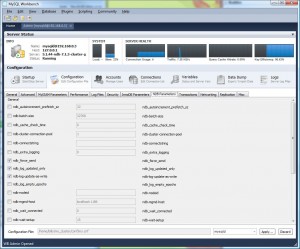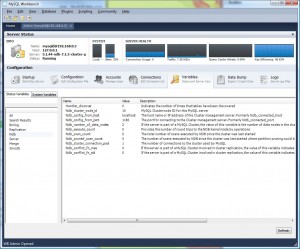The new version of MySQL Workbench (5.2.25) has just gone GA – see the Workbench BLOG for details.
So what’s the relevance to MySQL Cluster? If you have a Cluster that uses MySQL Servers to provide SQL access then you can now use MySQL Workbench to manage those nodes:
- Start & stop the mysqld processes
- Configure the per-mysqld configuration data held in my.cnf or my.ini
The reason that I describe the support as ‘partial’ is that these MySQL Servers are treated as independent entities (no concept of them being part of a Cluster) and there is currently no way to use it to configure or manage the other Cluster processes (data and management nodes). Having said that, what is there provides a lot of value and Workbench is designed to be very extensible and so hopefully there can be further MySQL Cluster support in the future.
In addition to MySQL Cluster-specific configuration parameters, you can also access the Cluster-specific status variables (these are the ones starting with ndb).
While I’ve focussed on what’s unique to MySQL Cluster, you can of course use the other Workbench features with MySQL Cluster – for example:
- Creating (or reverse-engineering) your data model
- Define your schema
- View/write data to your tables
- Create your SQL queries


